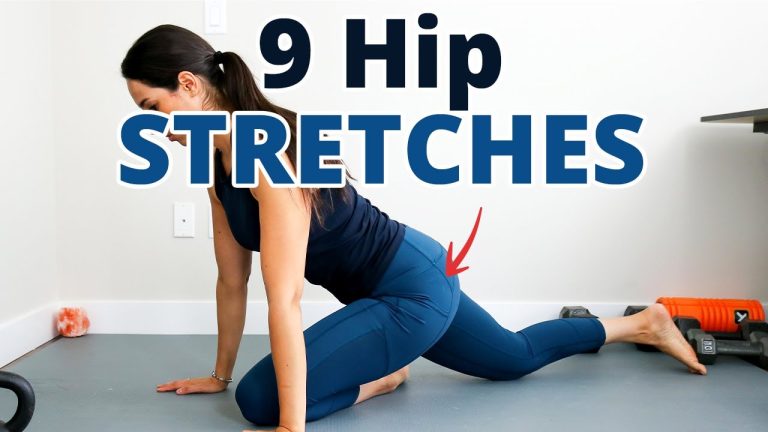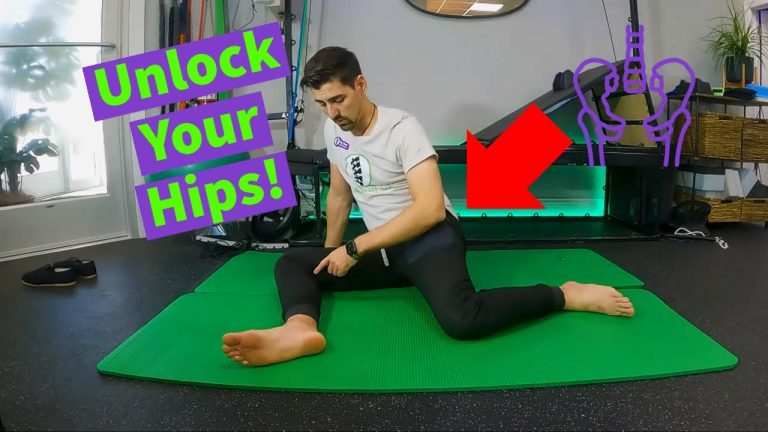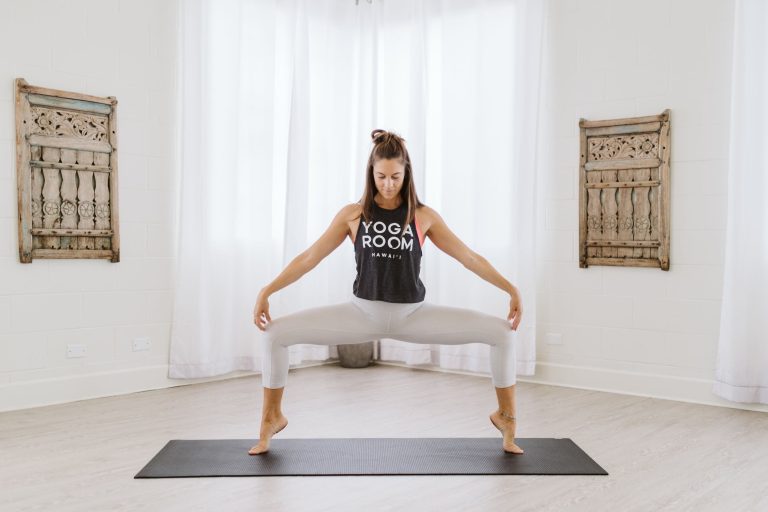Optimize recovery and relieve pain with foam roller for hip bursitis: expert tips
Are you tired of living with constant hip pain? Searching for an effective solution that doesn’t involve medication or surgery?
Look no further! Introducing the foam roller for hip bursitis 鈥?a revolutionary tool that could be your ticket to a pain-free life.
The benefits of foam rolling are numerous, from relieving muscle tension and improving flexibility to aiding in injury recovery. But when it comes specifically to hip bursitis, this magical cylinder becomes even more essential.
By incorporating foam rolling into your routine, along with targeted exercises and rest, you can finally manage your hip bursitis effectively. And that’s not it!
We’ll also explore how addressing biomechanical causes and gait abnormalities can further prevent reoccurrence. So, say goodbye to hip pain and hello to a new, more comfortable you.
Keep reading to discover the secrets of the foam roller for hip bursitis!
foam roller for hip bursitis
Foam rolling can be beneficial for individuals with hip bursitis. It helps to relieve hip pain by smoothing out the fascia and releasing trigger points.
When using a foam roller, it is recommended to start with a softer one and gradually progress to a denser one for more effective results. In addition, a specific exercise called the hip flexor roll can provide relief for hip pain.
Managing hip bursitis also involves rest, icing, reducing training volume, and considering anti-inflammatories. It is important to address any biomechanical causes to prevent re-occurrence.
Mobility issues and myofascial restrictions are commonly associated with hip bursitis, and a foam roller can be used to address tightness in the quadriceps and IT band. Strengthening the hip muscles is crucial for long-term prevention of hip bursitis.
It is also recommended to check and replace worn-out shoes to prevent hip bursitis and consider seeking guidance from a running shoe store or a physical therapist specializing in feet and orthotics. Lastly, getting a gait analysis done can help identify any gait abnormalities that may increase the risk of developing hip bursitis.
Key Points:
- Foam rolling can help relieve hip pain caused by hip bursitis by smoothing out fascia and releasing trigger points.
- Starting with a softer foam roller and gradually progressing to a denser one can provide more effective results.
- The hip flexor roll exercise specifically targets hip pain and can provide relief.
- Rest, icing, reducing training volume, and considering anti-inflammatories are important aspects of managing hip bursitis.
- Addressing biomechanical causes and addressing mobility issues and myofascial restrictions can help prevent re-occurrence of hip bursitis.
- Strengthening the hip muscles is crucial for long-term prevention of hip bursitis.
Sources
https://www.marathontrainingacademy.com/hip-bursitis
https://www.wellandgood.com/foam-rolling-for-hip-pain/
https://blog.paleohacks.com/foam-roller-hip-pain-exercises/
https://www.posturedirect.com/hip-bursitis-exercises/
Check this out:
https://www.youtube.com/watch?v=kxNsGHxExFY
💡 Pro Tips:
1. Gradually increase the intensity of foam rolling: Start with a softer foam roller and gradually progress to a denser one as your muscles become more accustomed to the pressure.
2. Target other areas besides the hips: In addition to rolling out the hip area, use the foam roller to address tightness in the quadriceps and IT Band, as these areas can also contribute to hip bursitis.
3. Don’t neglect strengthening exercises: Alongside foam rolling, it’s important to strengthen the muscles surrounding the hips to provide long-term pain relief and prevent future flare-ups of hip bursitis.
4. Check your shoes: Worn-out or improper footwear can contribute to hip bursitis. Regularly check and replace your shoes to ensure they provide adequate support and cushioning to prevent hip pain.
5. Consider a gait analysis: If you have recurring issues with hip bursitis, consider getting a gait analysis done by a professional. Gait abnormalities can increase the risk of developing hip bursitis, and addressing these issues can help prevent future flare-ups.
Foam Rolling For Hip Bursitis Relief
When dealing with hip bursitis, a common condition characterized by inflammation of the bursa in the hip, foam rolling can be an effective tool for pain relief. This technique works by smoothing out the fascia, a connective tissue that surrounds and supports muscles, and releasing trigger points that may contribute to hip pain.
Incorporating foam rolling into your routine can help alleviate tension and promote healing in the affected area.
Gradually Progressing In Foam Roller Density
To start your foam rolling journey, it is recommended to begin with a softer foam roller and gradually progress to a denser one. This helps your body adapt to the pressure exerted by the roller, preventing unnecessary discomfort or injury.
Start by using a foam roller with a lower density, such as a foam roller made of foam or a softer material. As your body becomes more accustomed, gradually transition to a denser foam roller, like one made of firm or textured materials.
Hip Flexor Roll Exercise For Pain Relief
One specific exercise that is highly recommended for hip pain relief is the hip flexor roll. To perform this exercise, position yourself on top of the foam roller, lying on your side with the foam roller placed just below your hip bone.
Use your arms and upper body to support your weight and roll slowly back and forth along the length of your hip flexor muscles. The hip flexor roll helps to release tension in this area and promotes improved range of motion.
Managing Hip Bursitis: Rest, Ice, And Anti-Inflammatories
In addition to foam rolling, managing hip bursitis requires a comprehensive approach. Resting the affected hip is crucial to allow for proper healing.
Ice can be applied to reduce inflammation and provide pain relief. Anti-inflammatory medications may also be considered under the guidance of a healthcare professional.
It’s important to consult with a doctor or physical therapist to determine the appropriate duration and dosage for these measures.
Preventing Re-Occurrence: Addressing Biomechanical Causes
Preventing re-occurrence of hip bursitis involves addressing any biomechanical causes that may contribute to the condition. It is essential to identify and correct any underlying issues that place excessive stress on the hip joint.
This may include strengthening weak muscles, improving flexibility, and addressing gait abnormalities. By addressing these issues, you can reduce the likelihood of developing hip bursitis again in the future.
Using Foam Roller For Quadriceps And IT Band Tightness
While hip bursitis primarily affects the bursa in the hip joint, there are often related tightness and imbalance in surrounding muscles, such as the quadriceps and IT band. A foam roller can be an excellent tool to address tightness in these areas and restore proper muscle function.
By using a foam roller to target the quadriceps and IT band, you can alleviate tension and potentially reduce the strain on the hip joint.
In conclusion, incorporating foam rolling into your routine can be an effective strategy for managing hip bursitis and promoting pain relief. By gradually progressing to a denser foam roller, performing exercises like the hip flexor roll, and addressing any biomechanical causes or related muscle tightness, you can optimize your recovery and reduce the risk of re-occurrence.
Additionally, it is essential to implement rest, ice, and consider anti-inflammatory measures for managing acute episodes of hip bursitis. Remember to consult with a healthcare professional for personalized guidance and ensure your foam roller practice is safe and effective.







